#françois marry
Explore tagged Tumblr posts
Text
Venus Nakshatras And Their Partners 🌹
*Disclaimer- These are just observations you may not think this applies to you or the people you know and that’s ok✨ please be kind and if you don’t agree or like this post just ignore it.
Venusians relationships are very flirtatious and affectionate, however, they must be aware to not come off too clingy. They are the type to never stop dating their partner even after marriage. Venusians are so supportive of their partners and any endeavors that they try to pursue, think of them as your personal cheerleader! Another thing I notice is that they find themselves dating or marrying someone who is different from them (race/ethnicity, age, or status), which could make people surprised they’re dating them. For the most part, their relationships are lowkey you don’t really find them in drama. They also seem to love the company of their significant other. Overall, Venusians tend to have fulfilling partnerships that could lead to marriage or just something very long term.
Examples:
-Dylan Minnete (Purva Ashadha Sun) & Isabella Elei
-Monica Belluci (Purva Ashadha ASC) & Vincent Cassel
-Jasmine Tookes (Purva Phalguni Moon) & Juan David Borrero
-Zoe Kravitz (Purva Phalguni Moon, AK) & Channing Tatum
-Salma Hayek (Purva Phalguni Sun & ASC) & François-Henri Pinault
-Jason Momoa (Purva Phalguni Sun) & Lisa Bonet
-Kelly Ripa (Purva Phalguni ASC) & Mark Consuelos
-Cher (Purva Ashadha Moon) & Alexander Edwards
-Adele (Bharani Sun) & Rich Paul









*Note- a couple of the celebrities have unknown birth time*
Yours Truly,
divinefemmexx 🖤
#venus nakshatras#bharani#purva phalguni#purva ashadha#nakshatras#vedic astro observations#astro notes#astro observations#nakshatra#astrology#vedic astrology#sidereal astrology#sidereal zodiac#birth chart#celebrity astrology
121 notes
·
View notes
Text

Sorry, bro. But this is always what happens when an old billionaire marries a younger, beautiful woman without a pre-nup.
There was an entire Addams family movie about this.
76 notes
·
View notes
Note
Rousseau VS Robespierre’s dad in a Worst Father Ever contest?
Asking the right question here. Let the people decide!
Propaganda:


1. François de Robespierre
The epitome of a dead-beat dad
Abandoned his 4 children not long after their mother died in childbirth and never returned
Possibly left the eldest son traumatised by feeling like he has to assume responsibility for his siblings
2. Jean-Jacques Rousseau
Had his mistress give up all the 5 children they had together and put them into an orphanage right after giving birth
Said he had 'no other choice' despite the fact that he stayed with the children's mother long after that and eventually ended up marrying her anyway
Didn't agree on having the children adopted by his benefactress instead of giving them to the orphanage
After the first one, he didn't leave the children with a monogram so he could potentially take them back after his material conditions improved
Said that he felt guilty about what he has done but that the real villain of the story were his friends who shared the information with the public
Ended up writing a hugely influential book on how to best raise children and see to their education (later claimed that he 'almost confessed' to the orphanage story in Émile itself though)
#listen they both suck#also not a lot of information I could find on de Robespierre#frev#french revolution#history#history memes#history polls#frev community#frevblr#jean jacques rousseau#rousseau#robespierre#tw: jj#philosophy memes#1700s#18th century#asks#polls
117 notes
·
View notes
Text

File them under "canon straight couple I'm weirdly obsessed with"
(headcanon rambling under the cut)
Ok I've been thinking about Spy and Scout's Ma SOOOO much. Woe, headcanons be upon ye:
To start with, their names are François Donadieu and Rose Cusack. They never married, but have been in a committed relationship for 23 years as of 1968
François is four years younger than Rose, they met in 1944 when he was 22 and she was 26, while she was working as a waitress.
Spy had been sent to speak with an informant who, unbeknownst to Spy, was going to doublecross him. After giving him bad information, the informant poisoned his coffee when he was distracted, which Rose noticed. Unable to think of anything else, she spilled his coffee on him to prevent François from being killed. When she brought him another mug, she also gave him a note to explain. He took her to dinner afterwards to show his appreciation.
She didn't tell him about her children until their 3rd date, terrified that her being a widow and single mother, with the majority of her children born out of wedlock, would be a major deal breaker. It was, in fact, a bonus, as Spy had always wanted a large family
Spy immediately stepped into a doting father role to her sons, and remained so until Jeremy was around 4. He will freely admit to his beloved that these were the best years of his life
His leaving the family came after a hit was issued on them that he only barely managed to thwart. He and Rose mutually agreed that it would be safest if he kept a distance from his family. François' only contact with them was to send money home, watch from afar in disguise, and occasionally rendezvous with Rose
Bonus Scout related headcanons that are still relevant:
Scout gets his buck teeth and green eyes from Spy (who has had work done on his teeth ((thats even canonical)) and has partial green/hazel heterochromia in both eyes). Rose misses her beau's natural charming smile, and is secretly happy that Jeremy inherited it.
Meetings with Spy leave a very distinct cigarette smell on Rose, which Jeremy recognizes and hates. The idea that some asshole is putting the moves on his ma pisses him off. As such, he hates that scent and Spy by extension (pre-spydad reveal)
Rose is somewhat ditsy and Spy is arrogant. Jeremy was cursed with the dumbest parts of both parents. François is deeply disappointed in this
152 notes
·
View notes
Text
Love and Marriage
I don't know if people have already written about this, but Carmy and Syd are portrayed as though they are symbolically married, bound together by this restaurant. The Bear portrays:
Infatuation: the blood hamachi dish. Moments like from films like Casablanca: "Of all the gin joints, in all the towns, in all the world, she walks into mine."
Courtship: the Thom Browne chef jacket
Cheating: Claire (Fatal Attraction, LOL)
Birth: the fire suppression test
Marriage: the partnership agreement, consult your lawyer first!
They have even made a family and created a legacy together (Marcus and Tina).
They are now in the separation stage (irreconcilable differences, or no?).
It reminds me of François Truffaut's movies about Antoine Doinel (400 Blows, Stolen Kisses, Bed and Board, Love on the Run - which also features trains and are semi-autobiographical, btw) and his life through relationships and marriage. I'm also getting some of Kubrick's Eye's Wide Shut in S3 and themes of obsession, frustration, fidelity, and the subconscious.
Personally, I'm hoping things go more like the ending of Eyes Wide Shut.

The Bear is actually a love story and a sex comedy. This show has sex on the brain, it just doesn't show it.
76 notes
·
View notes
Text

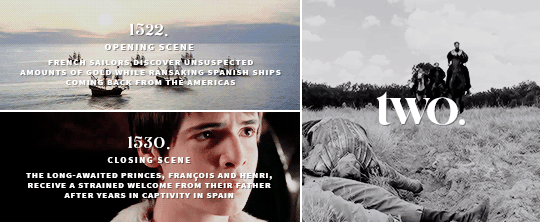

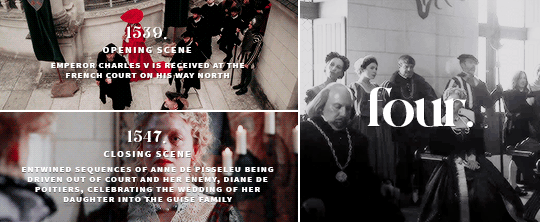
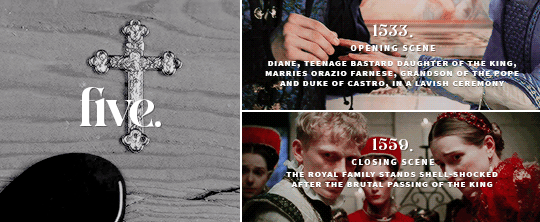
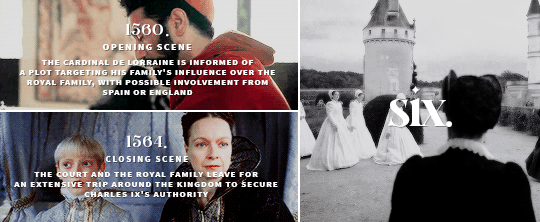

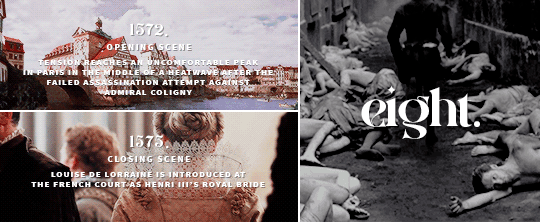



K I N G S I D E, a tale of seven kings
first season 1514-1520. Claude and François finally get married, a vacant seat for Mary Tudor, Louise of Savoy's stubborness to keep her son in check. A new King arises, the New Order, François' quest for glory in Italy. Another crown, another campaign.
second season 1522-1530. The inheritance dispute that leads Bourbon to treason. The pursuit of the italian dream, Claude dies, all is lost in Pavia. Süleyman and the unthinkable alliance, captivity in Spain. The Ottoman fleet. Royal depression. The inheritance dispute that led Bourbon to treason. The ladies' peace, Henry VIII flinching, a price for two princes, a New wife for the King.
third season 1531-1537. Louise dies, tensions between François and Marguerite. The wedding of Catherine and Henri. The rise of Pisseleu, the battle at Court between Charles and Henri and their people. War between Diane and Montmorency. Placards and the anti-heterics frenzy, another war in Italy. Wedding and death of Madeleine.
fourth season 1539-1547. Mending tensions between France and Spain. A very stubborn niece. All eyes on Henri and Catherine's sterile womb. Death of Charles. The duel in Jarnac. The King is dead, long live. Diane de Poitier's absolute triumph over Anne de Pisseleu. The Guises make their move.
fifth season 1553-1559. Diane of France's not so typical royal wedding. Catherine giving birth to the twins, Chenonceau goes to Diane, the cordial hate between the two. Rohan VS Nemours. Montmorency mess and a remarriage for Diane of France. The death of Henri, everything falls down.
sixth season 1560-1564. François II barely hanging on, Catherine's almost giving up, Elisabeth married off, the Guise family's counterpower, Montemorency's political exile, the Amboise conspiracy, preparations for the grand tour.
seventh season 1565-1572. The end of the grand tour, encounter between the royal family and Elisabeth, queen of Spain. The rise of Charles IX, a new queen, Marie Touchet and her bastard boys. Catherine's plans to get a match for Marguerite. Rising tensions between Charles and Henri after Jarnac and Montcontour. Marguerite's nuptials amidst tensions and Coligny's attempted murder.
eighth season 1572-1575. Coligny and the Protestant leaders rallying the troops. The Saint Barthelemew Massacre and the promise of Marguerite to never forgive her family. Catherine finds out Anjou's possible involvement. A new king for Poland. Marguerite's toubled married life. Death of Charles IX. Henri's escape from Poland and slow return to France.
nineth season 1581-1584. Catherine's illusions shatter. New King, no heir. Marguerite returns to Paris. Louise shows some spine against the King's favorites. Quarelling with Anjou, tensions with Elizabethan England, Anjou's election and subsequent death and Catherine's anger. The Guise family veering off the road.
tenth season 1585-1589. The mounting war of the three Henris. All eyes on King Henri who has no sons, Catherine's political exile, the slow burning of the last Valois children. Hunting down Marguerite from stronghold to stronghold, ending with her house arrest in Usson. Assassination of the Guise brothers, the death of Catherine, Henri III breaks down in Diane's arms. Marguerite in exile, Diane the only "true" daughter of Catherine's, as she sets out to (successfully) pacify the kingdom on her own.
#historyedit#perioddramaedit#mine#*#*kingside#16th century#so yeah this took me a whole month instead of a good week#we love crappy laptops
197 notes
·
View notes
Text
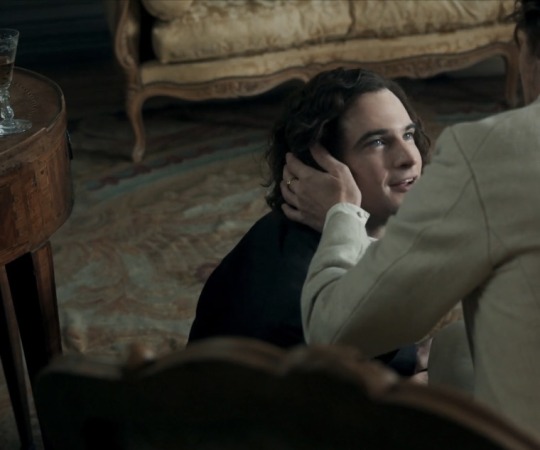
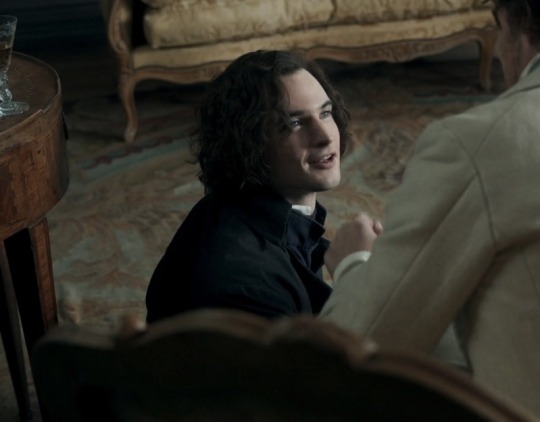
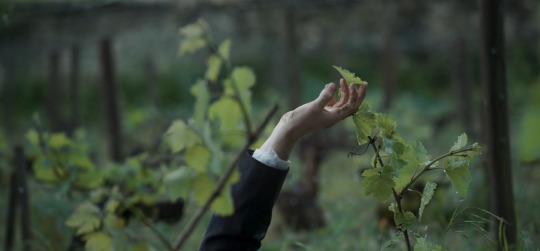
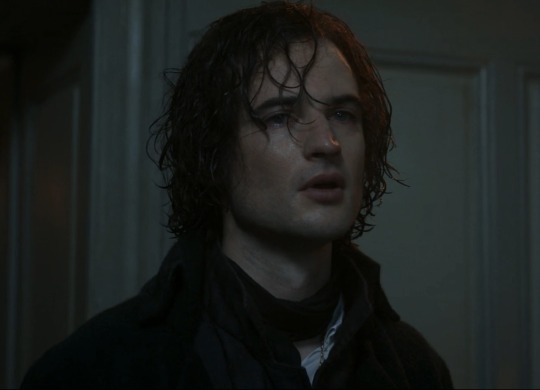
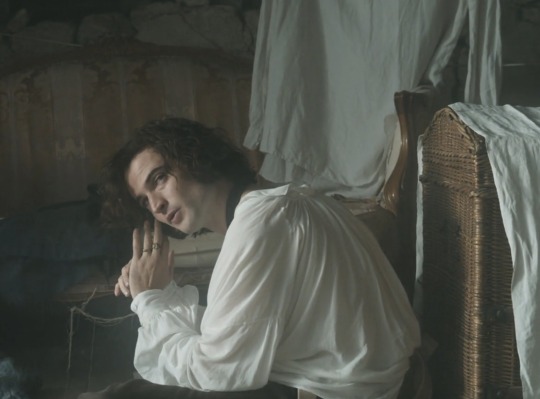
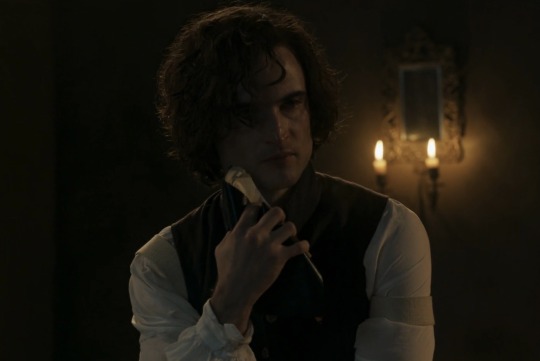
Tom Sturridge as François Clicquot in “Widow Clicquot.”
“Compared with Barbe-Nicole, however, it seems François was sensitive and moody, and she must also have noticed immediately the way in which his mother and father coddled him. She soon understood why. He could be cheerful and energized one moment and apparently turn melancholy and despairing the next. This was a side of her husband she would not have expected. Despite the close connections between their families, she had not seen much of him for several years.”
———————
“François's letters home from 1792 to 1794 are filled with patriotic zeal. He had a romantic view of war and was naturally an idealist. He was also apparently prone to illness and more worryingly to depression. Philippe wrote urgent letters to his son in Switzerland, reminding François of his "weak temperament" and history of hernias. In other letters, he begged his son to fight melancholy and eat well. There was a darker side to François's ebullient personality that his parents knew only too well.”
———————
“But even if she did not realize it yet, she and François were essentially mismatched in at least one fundamental way. She had inherited all her father's and Philippe's ruthless pragmatism and keen business instincts. Barbe-Nicole, however, had married a dreamer. And he had his heart set on the wine business.”
———————
#tom sturridge#widow clicquot#veuve clicquot#madame clicquot#champagne#vertigo#film#movies#haley bennett#period drama
74 notes
·
View notes
Note
yuri recs 1,2,3 GO!
AH FINALLY MY TIME HAS COME
first and foremost, i have to recommend the best yuri ever written (in my opinion):
I’m in Love with the Villainess! this is an absolutely incredible story about an office worker, Rei Ohashi, who gets reborn into the world of her favorite otome game Revolution! now, as the protagonist Rae Taylor, she courts the villainess of the game Claire François! while this seems like a typical isekai story, it is anything but. there’s plenty of twists and turns along the way, and it’s filled with honest conversations about being gay, trans, and so much more! i highly recommend you start with the light novels because they are beautiful!! additionally, the author, Inori-sensei, is a trans lesbian. so you know these conversations are coming from a genuine place!!
next i’d recommend Whisper Me a Love Song!! this is a cute adorable slice-of-life yuri about a school girl, Himari Kino, falling in love with her senpai (and lead singer of the local band SSGirls), Yori Asanagi! Yori and Himari are absolutely adorable together and they are truly wonderful!!
i would also recommend Citrus/Citrus+! those of you who know enough yuri manga probably know this one, for one specific detail. however, for those not in the know, i’ll give a rundown! Yuzu Aihara is a high school gyaru who is excited to get a boyfriend this semester (even tho she’s goes to an all girls school), but she quickly falls in love with the student council president, Mei! on top of figuring out her feelings for another girl, there’s one more complication… Mei is Yuzu’s new step sister! this story follows Yuzu and Mei as they overcome their communication issues and find love in each other (and get married)! it’s a very sweet story and i really highly recommend it!
also, if you’re looking for something a bit more… adult, i’d highly recommend Asumi-chan is Interested in Lesbian Brothels! Asumi is a college girl who wants to find her long lost childhood crush, Mai. her friend told her that she’s seen her around! trouble is, Mai works at a lesbian brothel. so now Asumi must make repeated visits to the brothel in order to track her down (and have a bit of fun on the side~)! while this may seem like it’ll just be “porn without plot” so to speak, this story is genuinely very endearing and funny, plus the art is super cute and good! so not only are you getting expertly drawn adult scenes, but also adorable scenes on top of that!
there’s plenty more i could recommend, but those are some of my personal favorites! i’d also recommend checking out The Magical Revolution of the Reincarnated Princess and the Genius Young Lady if you want a fun fantasy isekai and Otherside Picnic if you want spooky yuri with terrifying monsters! enjoy reading!!
#hehe this was long#it could’ve been longer but i wanted to limit myself to not go insane here#GO READ THESE THEYRE SO GOOD#especially wataoshi it’s amazing#i’m in love with the villainess#im in love with the villainess#iltv#watashi no oshi wa akuyaku reijou#wataoshi#whisper me a love song#sasakoi#citrus manga#citrus plus#asumi chan is interested in lesbian brothels#yuri#yuri recs#yuri recommendation#ask#hellsite hall of girlfriend#madame girlfriend’s bullshit#the girlfriend answers
76 notes
·
View notes
Text

Saint John the Baptist Preaching in the Desert
Artist: Jean Baptiste Henri Deshays (French, 1729–1765)
Date: c. 1758–1764
Medium: Oil on Canvas
Collection: Art Institute of Chicago, Chicago, IL, United States
Description
A precocious talent, Jean-Baptiste Deshays married the daughter of Rococo artist François Boucher and became his protégé. Although best known as a painter of religious subjects, Deshays often employed the soft, highly fluid manner that Boucher used for his amorous “boudoir” pictures. In fact, this work was for a long time believed to be by Boucher. The subject of the painting derives from the Gospel of Matthew: seated before the multitude and with arms dramatically outstretched, John the Baptist warns, “Repent ye, for the kingdom of heaven is at hand.”
#christianity#painting#john the baptist#desert#jean baptiste henri deshays#french painter#oil on canvas#gospel of matthew#biblical scene#biblical art#18th century painting#clouds#figures
39 notes
·
View notes
Text




Happy 12th wedding anniversary to Hereditary Grand Duke Guillaume and Hereditary Grand Duchess Stéphanie of Luxembourg!
Hereditary Grand Duke Guillaume and Belgian Countess Stéphanie de Lannoy first met while attending a social gathering in Germany in 2004. They started dating in 2009, after seeing each other for the second time.
Their engagement was announced on 26 April 2012. The couple got married in a civil ceremony at the Town Hall, on 19 October 2012. Their religious wedding took place on 20 October 2012 at the Cathedral of Our Lady of Luxembourg.
They have two sons, Charles (4) and François (1), who are second and third in the line of succession to the throne of Luxembourg, respectively.
32 notes
·
View notes
Text

Overview over the Brodies' House, real and imagined rooms
I'm using Harbour Village as Edinburgh, and when I first set a scene in Philipp's house in 1745, I just built the living-room into one of the three-unit houses that make up the world. You can still see the three back-stairs. Realistically, the house shouldn't be so broad and have more floors stacking up instead. But I didn't expect that storyline to grow so much. I kept furnishing rooms as I went along.
The living-room hasn't changed much over the years, except for the piano being added. The round table can be moved in and out as needed. The small adjoining room was used by Rosalie, Fergus, Marianne and now Eppie. Oh, and Alice slept there on her wedding-night for reasons of propriety.
The main bedroom existed since Philipp's time as a widower. It hasn't changed much either. Rosalie gave it up to the married couple, so it's Roseanne's and Nicolas' room now. Then there's this awkward thoroughfare room in front of the bedroom. This one is shared by André and François now. André got Philipp's desk, but there's not much space for anything else. It used to be an emergency guest-room and used as such by Louise here and here.
The top right corner room first figured as Eppie's "haunted room". It was briefly used as a guest-room for Fiona and Fergus. Supposedly it became Richard's room later, but we never saw that. It's now shared by Rosalie and Marianne. The beds in this part are mismatched on purpose. Proper furniture was expensice, and I imagine Rosalie repurposed several sofas.
In the lower right corner is what used to be Eppie's and later Jon's room, then Philipp's office and now Béatrice's and Lucie's room. Again with two sofa-beds. Only Thérèse didn't get a space in the main house. She's assumed to sleep in a servant's room in the attic (which doesn't technically exist). Given her background and the fact that she's not related to the family, she wouldn't want anything more fancy.

On the ground floor is the kitchen, which we've only seen once. Next to it is the dininig room, on which I always keep the curtains closed to disguise that it's on the ground-floor. The pantry was never meant to be seen at all, not sure why I put those cupboards there. The front room and the big space where everyone resets to are supposedly where the school is. So far we've only seen the window of the front room.
25 notes
·
View notes
Text
Life and Fate of Sophie Momoro, née Fournier, and Her Childrens According to Certain Information

Festival of Reason where Sophie Momoro played a key role during certain ceremonies
Sophie Fournier was born in 1766 in Auxerre, where her family was involved in the creation of printing typefaces. Her grandfather had purchased the Blé foundry, one of the most important in France. On her mother’s side, the Gando family specialized in printing typefaces for musical scores.
Given her family’s professions, it was natural for Sophie Fournier to cross paths with Antoine François Momoro, a printer. They married on January 18, 1786, and on December 13, their only child, Jean-Antoine Momoro, was born. Antoine-François Momoro was initially a cautious revolutionary in 1789 but later dedicated himself fully to the cause until his arrest and execution. Although Sophie remained in the background, it is believed she remained loyal to her husband during his most difficult times, such as his arrest following the Champ de Mars massacre in 1791.
It wasn’t until late 1793 that Sophie Momoro began to play a public political role. On November 10, 1793, during the Festival of Reason, a woman portrayed the Goddess of Reason, wearing a Phrygian cap and carried on a stretcher by men. Patriotic songs echoed throughout the event. There is some doubt about whether Sophie played the role of the Goddess of Reason during this ceremony (some think it was Maillard, an opera actress, or Mademoiselle Aubry). However, Duquesne notes that since the ceremony was presided over by Antoine François Momoro, it is highly probable that it was Sophie Momoro.
On December 5, 1793, at the Temple of Reason, Sophie Momoro was clearly identified as the Goddess of Reason, playing an important role in the de-Christianization campaigns. Sophie was carried on a stretcher, then placed on a platform, with the crowd proceeding to the Convention. On the way back, she was again placed on a stretcher, but due to someone losing balance, she fell and broke her arm. Another notable event during the ceremony involved the impromptu burning of wooden statues of Saint Sulpice and Saint Peter. The president of the Mucius Scaevola section (formerly the Luxembourg section) Ceyrat declared, "If this God exists, let him thunder and strike me down with a bolt of his thunder!" When no thunder struck, he concluded, "He does not thunder, therefore his existence is a chimera."
Despite her injury, Sophie continued to participate in similar ceremonies of dechristianization . When portraying the Goddess of Reason, she would reportedly wear white and carry a pike (considering the struggle for revolutionary women to bear arms, this shows a certain determination on Sophie’s part).
One of Sophie Momoro’s other political actions was presiding over a reconciliation between former Catholic priests and Protestants. According to Jean-Pierre Duquesne, she was surrounded by "two or three hundred young girls dressed in white, beautiful to behold, with provocative looks, low-cut dresses, and crowned with oak leaves." During this de-Christianization ceremony, it was declared that the two religions had only survived through "clerical charlatanism according to theirs words. Thus, Sophie not only supported her husband but also demonstrated significant militancy herself, like many wives of revolutionaries who remain too often in the shadow of their husbands.
However, this marked the beginning of the end for her marriage. Following his involvement in an attempted insurrection and the complex context of 1794 with factional struggles, Antoine François Momoro was executed as part of the "Exaggerated" faction alongside Charles Philippe Ronsin, Jacques René Hébert, François-Nicolas Vincent, and others. He was falsely accused, among other things, of attempting to sabotage supplies and was allegedly (likely falsely) claimed to have amassed 190,000 livres, despite being known as an incorruptible revolutionary who lived very modestly. The saddest part is that, although he died bravely, his heart must have been broken knowing that his wife had been arrested and risked following him to the guillotine.
In prison, Sophie Momoro was inconsolable when she learned of her husband’s death from a man named Jean Baptiste Laboureau, who escaped the Hébertist execution by implicating, among others, Antoine-François Momoro. Laboureau’s remarks were either highly insensitive or downright cruel: "The Goddess of Reason was not at all reasonable; during the day, she lamented greatly over the accident that happened to her husband." Unlike Marie-Françoise Goupil and Lucile Desmoulins, she was not executed. Sophie Momoro was released on May 27, 1794, but was left without means and had to raise her son alone. Since Momoro was not rehabilitated ( and he will never be), she could not request the return of his assets, and even so, her husband had left very little inheritance. On August 25, 1794, she requested financial assistance and the return of Antoine-François Momoro’s printing presses. Both requests were denied by the State.
There is a point of divergence between Jean-Pierre Duquesne and Albert Mathiez. In 1795, a family council appointed Sophie Momoro as her son’s guardian. However, Momoro’s father was appointed as substitute guardian. According to Albert Mathiez, Momoro’s father, a shoemaker, had died before his son’s execution. Mathiez stated, "At that time, Momoro’s father, who had worked as a shoemaker, was already dead. But his mother, who had taken a job as a servant after her husband's death, was still alive." According to reports from the commissioners of the Besançon district, Momoro’s mother died shortly after her son, likely of grief. The report reads: "Today, Germinal 11, Year II of the Republic, at eleven o'clock in the morning, we, Jean François Denisot, member of the general council of the Besançon district, appointed by order of the same district on this day to affix seals at the home of the mother of the named Momoro, who has just suffered the death penalty in Paris, and having with us François-Joseph Bernard as our secretary clerk, we went to the home of citizen Forno, a war commissioner, where the said Momoro was a cook. There, we invited citizen Forno to show us the room of the said Momoro, to which she replied that she had died the previous night but was ready to introduce us to the room she occupied." I believe Momoro’s father was alive, and Albert Mathiez likely made an error, but it is possible that the opposite is true.
Sophie Momoro remarried on November 7, 1796, to a military man named Jacques-Marie Botot, who had been appointed commander of the Seine gendarmerie in 1793 (one of his apparent roles was escorting the former Queen of France, Marie Antoinette, to the scaffold). In 1795, he was appointed brigade leader. Together, they had a daughter in 1798 named Stéphanie Joséphine Adèle. Sophie’s mother also came to live with the couple and their children. However, the marriage began to falter. With the rise of Bonaparte, who was suspicious of Jacques-Marie Botot, he was appointed brigadier general and retired by the First Consul. Some accused Botot of becoming difficult and bitter in their marriage, while others believed it was due to Sophie taking a lover, the architect Jean Joseph Clotilde Lelouche. According to Georges Lenôtre, Botot’s disgrace precipitated the end of their marriage: personally, I don’t think there is any evidence of opportunism on Sophie’s part. After all, it seems she remained faithful to Momoro even in the hardest times. Perhaps Botot’s bitterness over his disgrace under Bonaparte, combined with Sophie taking a lover, led to their incompatibility over the long term. Sophie retained custody of her son, while Botot retained custody of their daughter.
Sophie moved in with Lelouche and gave birth to a daughter in 1806 named Joséphine-Clotilde-Sophie. Although he never married her, Lelouche acknowledged his daughter. However, when Sophie died two years later, it was not her lover who reported her death, but her son, Jean-Antoine. Apparently, she and her son were facing new financial difficulties. Another strange fact: despite her civil status clearly stating she was a widow of Momoro and divorced from Botot, Jacques Marie Botot did not mention his divorce status in his civil records, even though she had been dead for 14 years.
Despite their parents’ divorce, Stéphanie Joséphine Adèle Botot seems to have remained close to her brother, Jean-Antoine Momoro. She died on January 15, 1860. Joséphine Clotilde Sophie married a history painter on February 4, 1830, named Henri Louis Hippolyte Poterle.
Jean-Antoine Momoro never abandoned his mother, and it seems clear he never renounced his father and remained proud of his parents. He always signed his name as Momoro-Fournier in the registers. This was bold, as Momoro was never rehabilitated, and in some cases, family members temporarily abandoned the family names of unrehabilitated revolutionaries (understandably so, as life must have been hard enough for them), but he also signed with his mother’s surname. He always lived in the neighborhoods where his father had been active when he was in Paris. He worked as a civil servant. According to Joseph Marie Quérard, he was an "assistant chief at the Ministry of Public Works" and a "playwright" with three comedies, though it is unclear if they were published or simply performed. He married a woman from Nantes named Séraphine Emilie Nicolas, and they had a daughter, Marie-Adélaide, who married a postal worker. Jean-Antoine Momoro died in 1868.
P.S.: I mentioned some similarities and differences between Camille Desmoulins and Antoine-François Momoro in this post: Camille Desmoulins and Antoine-François Momoro. It seems that their sons (Horace-Camille Desmoulins and Jean-Antoine Momoro) also had in common a sense of pride in their parents.
Sources:
Albert Mathiez
Jean-Pierre Duquesne
#frev#french revolution#women of revolution#cordeliers#sophie momoro née fournier#momoro#It makes me angry that Momoro's printing press was not returned to his wife or that Sophie was denied assistance.#When people like Tallien#who were acquiring wealth illegally during their time in office#were living the good life.
26 notes
·
View notes
Text
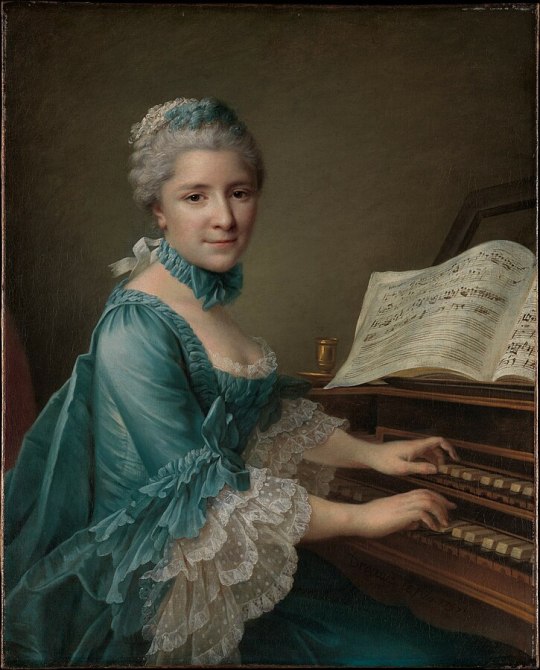
François-Hubert Drouais (1727-1775) "Portrait of a Woman, Said to be Madame Charles Simon Favart (Marie Justine Benoîte Duronceray, 1727–1772)" (1757) Oil on canvas Located in the Metropolitan Museum of Art, New York City, New York, United States In 1745 Mademoiselle Duronceray—the singer, dancer, and comedienne probably portrayed here—married Charles Simon Favart, the father of French comic opera. Among her best-known roles was that of the heroine in The Loves of Bastien and Bastienne, 1753, in which she inspired a revolution in theatrical costume by wearing authentic peasant dress. Drouais’s portrait of her seated at a harpsichord recalls traditional representations of Saint Cecilia, patron saint of music.
#paintings#art#artwork#genre painting#female portrait#françois hubert drouais#francois hubert drouais#oil on canvas#fine art#the metropolitan museum of art#the met#museum#art gallery#french artist#portrait of a woman#history#harpsichord#musical instruments#blue dress#dresses#clothing#clothes#1750s#mid 1700s#mid 18th century#a queue work of art
64 notes
·
View notes
Text
Ok so like, y’all already know how much I hate ppl interpreting the binding of Hera as Hephaestus being an incel who only did it to marry Aphrodite, especially if they use the François Vase as evidence, bc it could literally be interpreted as anything and this theory is such a huge stretch, I won’t repeat my points here (maybe I’ll reblog them idk)
But lately I’ve been thinking about it again, y’know how the timeline is inconsistent and messy in mythology? How sometimes Hermes sends wedding invites for Zeus and Hera’s wedding even tho he is supposed to be born after the marriage? Now Hephaestus is either thrown off Mount Olympus as a baby or as an adult, so who’s to say that Aphrodite wasn’t married to him before his fall? Not after it? I can’t think of anything confirming or denying “when” they got married.
What if instead of Zeus starting a challenge for Aphrodite’s hand in marriage (which literally has zero evidence) what the François Vase is actually referencing is Aphrodite receiving her husband as he returns home?
#greek mythology#ancient greek mythology#greek pantheon#greek goddess#hera#hera goddess#hera greek mythology#hera deity#zeus#Hephaestus#hephaistos#Aphrodite#aphrodite goddess#aphrodite greek mythology#François Vase
24 notes
·
View notes
Text

Franz Xaver Winterhalter (German, 1805-1873) Princess Francisca of Brazil, 1844 Palace of Versailles Dona Francisca (2 August 1824 – 27 March 1898) was a princess of the Empire of Brazil (as daughter of Emperor Dom Pedro I, who also reigned as King Dom Pedro IV of Portugal, and his first wife Maria Leopoldina of Habsburg), who became Princess of Joinville upon marrying François d’Orléans, son of the French king Louis Philippe I.
#real people#princess#royalty#royal#Franz Xaver Winterhalter#German#German art#Germany#1844#1800s#art#fine art#european art#classical art#europe#european#fine arts#oil painting#europa#female portrait#female#portrait#brunette#woman#black eyes#Winterhalter#world history#historical art#historical painting#Habsburg
36 notes
·
View notes
Text
What happened to Arno Victor Dorian after the events of Unity and Dead Kings ?
Following Elise's death at the end of Assassin's Creed Unity, Arno falls into a deep depression, finding little to live for.
He is also no longer part of the French Brotherhood.
In the DLC "Dead Kings", Arno is contacted by Marquis de Sade, who tasks him with finding a manuscript in the tomb of Louis IX.
Reluctantly, Arno agrees to this mission, and travels to Saint Denis to find the manuscript. During his search, Arno meets a young thief named Leon.
While the two work together, Leon's perspective on the world starts to break through Arno's grief, slowly showing him that there is more to live than the tragedies he's faced in his past.
What happened after Dead King is in the O.Bowden's novel.
I don't like his novels.
I will not summarise Oliver Bowden's novel.
But in the final chapters Arno found Elise's journal, and also Jennifer Scott Kenway's letters, where Elise requested him to seek unity for the two Orders.
It didn't go well obviously.
Arno rejoined the French assassins but we don't know when or how.
I have few theories:
Arno was extremely talented as an Assassin and his skills were too valuables
The Brotherhood forgive him after Germain's death and the rescue of the sword of Eden
The french assassins saw Napoleon's increasing influence over France and they need Arno to keep an eye on him. They became allies even though Napoleon's ideas were closer to those of the Templars.
Over the years, Arno earned the rank of Master Assassin and eventually the rank of Mentor (but he wasn't a bureaucrat as Mirabeau).
He took Leon under his wing and adopted him. At first Leon was wary of calling him "Father".
Arno presumably got married and had other children, as he is directly related to Callum Lynch, the protagonist of the Assassin's Creed movie*. Arno made a brief appearance in the movie.
He named one of his children Charles (or Charlotte) after his father and another François (or Françoise) after Monsieur de la Serre.
Did Arno and Ratonhnhaké:ton ever met ? (Reminder: Ratonhnhaké:ton is only twelve years older than Arno)
I think that Ratonhnhaké:ton became aware of Arno's actions during the French Revolution. They may have exchanged letters but they never met in person (and Connor had a big family to took care of and a very sweet daughter who was gifted by the spirits).
Did Arno find out who killed his father?
YES
He knew about Shay but he didn't hunt him down because revenge only leads to a bad path (and probably he thought that Shay was already dead which could be true).
Did Arno met Ethan Frye? Yes, it's possible due to the proximity of the French and english's brotherhood. Arno should be around 65/70 yo (if he was still alive).
We don't know when or how Arno died because Ubisoft never gave us answers (again)
I think that Arno passed away before the birth of the Frye twins, in 1847.
*I have a theory:
AC Unity should have been the gateway to a new present with Callum Lynch (and his ancestors like Aguilar de Nerha) as a new protagonist. But the movie has been a complete disaster so Ubisoft abandoned the idea.

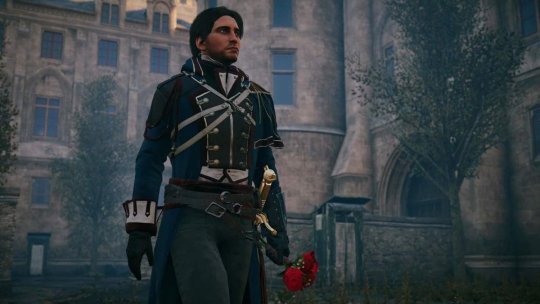
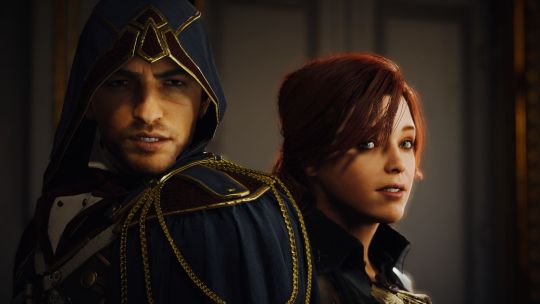
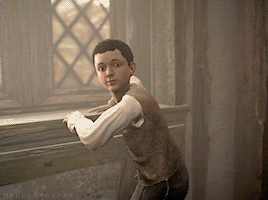

#assassin's creed#assassin's creed unity#arno dorian#arno victor dorian#ac arno#ac unity#elise de la serre#ac léon#ubisoft#ubisoft games#ubisoft quebec#assassin's creed dead kings#ac movie#Callum Lynch#François de la Serre#Charles Dorian#pierre bellec#Jennifer Scott Kenway#shay patrick cormac#Ethan Frye#the frye twins#AC Napoleon#Napoleon Bonaparte#ratonhnhakè:ton#connor kenway#arno x elise#Aguilar de Nerha#arno x callum
30 notes
·
View notes